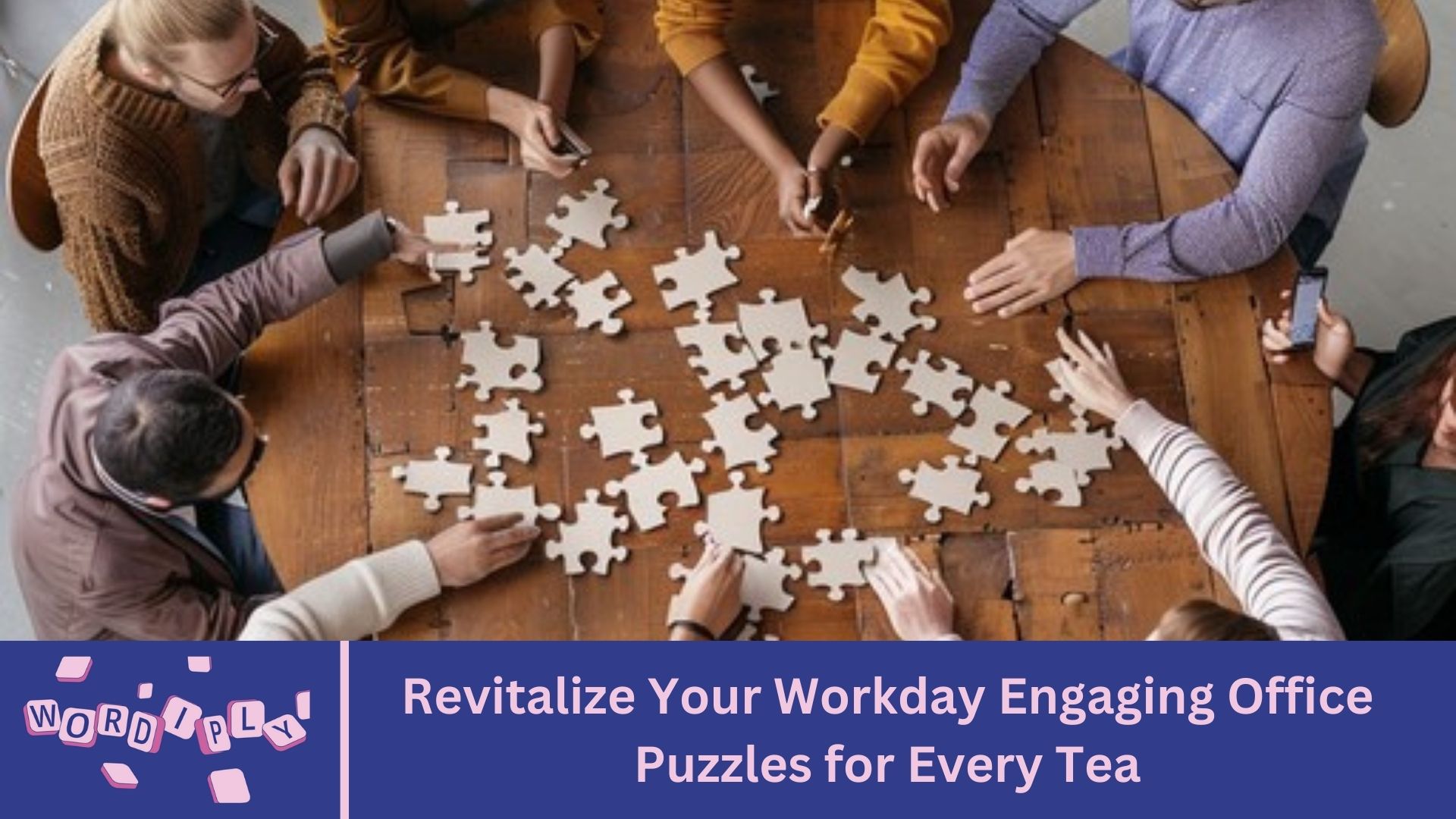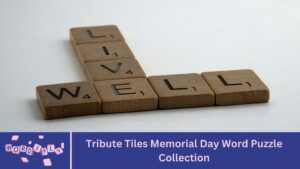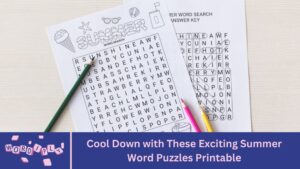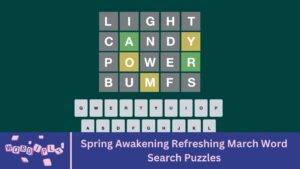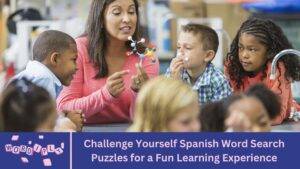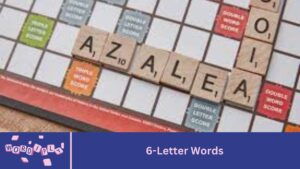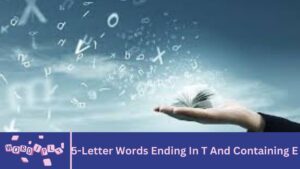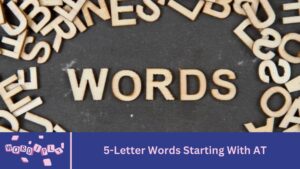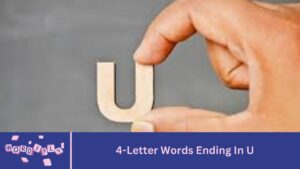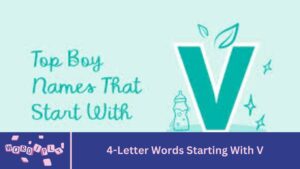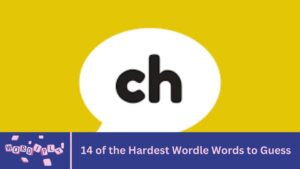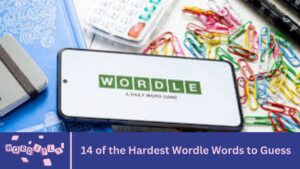Table of Contents
In today’s fast-paced work environment, finding ways to keep teams motivated and engaged is essential for maintaining productivity and job satisfaction. One effective and enjoyable strategy is incorporating office puzzles into the daily routine. These puzzles offer a refreshing mental break from the usual work tasks, allowing employees to recharge and return to their responsibilities with renewed focus. By integrating engaging and diverse puzzles into the workday, teams can benefit from improved collaboration, reduced stress levels, and enhanced problem-solving skills. Office puzzles can range from word games and logic challenges to interactive jigsaw puzzles, each providing unique advantages that contribute to a more dynamic and cohesive team. In this guide, we’ll explore how office puzzles can revitalize your workday and offer practical tips for incorporating them into your team’s routine to boost morale and productivity.
Benefits of Office Puzzles
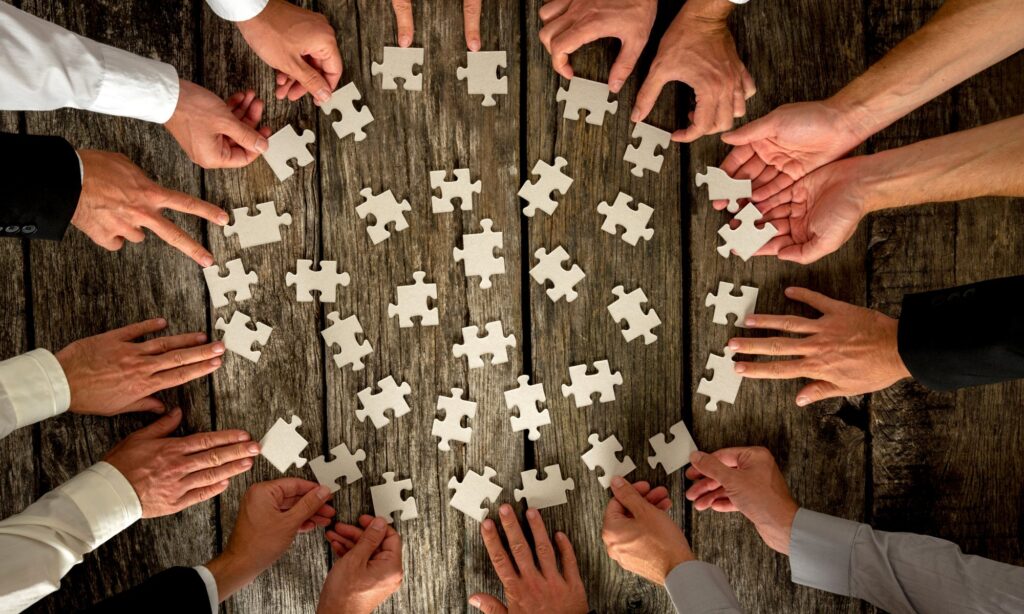
Office puzzles offer more than just a break from work—they provide tangible benefits that enhance both individual performance and team dynamics. Here’s how engaging with puzzles can positively impact your workplace:
- Enhancing Team Collaboration and Communication: Puzzles often require group efforts to solve. This collaborative nature fosters better communication among team members and encourages them to work together towards a common goal. It breaks down barriers and helps build stronger interpersonal relationships.
- Reducing Stress and Increasing Focus: Taking a short puzzle break can help employees decompress and clear their minds. This mental reset can reduce stress levels and improve overall focus when returning to tasks. The enjoyment of solving puzzles provides a refreshing change from routine work pressures.
- Encouraging Creative Problem-Solving: Puzzles challenge the brain to think in new and innovative ways. This kind of cognitive exercise can enhance problem-solving skills, which are valuable in tackling complex work issues. Employees who regularly engage in puzzles may find themselves approaching problems with a more creative mindset.
Types of Office Puzzles
Office puzzles come in various forms, each offering unique benefits and engaging experiences. Here’s a closer look at different types of puzzles you can incorporate into your workday:
Word Puzzles
- Crosswords: These puzzles involve filling in a grid based on clues. They enhance vocabulary and general knowledge while providing a fun challenge. Team members can work together to solve clues, fostering collaboration and communication.
- Word Searches: Involves finding hidden words within a grid of letters. Word searches are great for quick mental breaks and can help improve pattern recognition and focus. They can be tailored to include industry-specific terms or team-related themes.
- Anagrams: These puzzles require rearranging letters to form new words or phrases. They challenge problem-solving skills and can be a creative way to engage teams in brainstorming sessions or ice-breakers.
Logic Puzzles
- Sudoku: A number-placement puzzle that requires filling a grid so that each column, row, and region contains all the numbers from 1 to 9. Sudoku boosts logical thinking and pattern recognition, making it a great tool for mental exercise.
- Riddles: These puzzles present a question or statement that requires creative thinking to solve. Riddles stimulate lateral thinking and can be a fun way to spark conversation and laughter among team members.
- Brain Teasers: Short puzzles or problems that challenge your brain to think in new ways. Brain teasers can vary in difficulty and often involve lateral thinking or mathematical skills. They are excellent for quick mental workouts and team challenges.
Jigsaw Puzzles
- Traditional Jigsaw Puzzles: Involve assembling pieces to create a complete picture. They are excellent for promoting patience and attention to detail. Completing a puzzle together can also enhance team bonding and collaboration.
- Digital Jigsaw Puzzles: These offer the same benefits as traditional jigsaw puzzles but in a digital format. They can be used for remote teams or during virtual meetings, making them versatile and accessible.
Each type of puzzle offers its own set of cognitive benefits and can be used to achieve various goals within a team setting. Whether you’re looking to enhance collaboration, improve focus, or simply provide a mental break, incorporating these puzzles into your office routine can offer valuable rewards.
Implementing Puzzles in the Workplace
Integrating puzzles into the work environment can refresh and energize your team. Here’s how to do it effectively:
Scheduled Puzzle Breaks
Create designated times during the day for puzzle activities. Short breaks for solving puzzles can provide a mental reset, helping employees return to their tasks with renewed focus. You might schedule a 10-minute puzzle session mid-morning or mid-afternoon to keep energy levels high.
Puzzle Competitions and Challenges
Organize friendly competitions where teams or individuals solve puzzles for fun. This can include crossword races, logic puzzle challenges, or jigsaw competitions. These events can boost camaraderie and add a sense of fun to the workplace while encouraging problem-solving skills.
Tools and Resources for Easy Puzzle Access
Provide various puzzle options to cater to different preferences. Use online platforms and apps that offer a wide range of puzzles, or supply printable versions for those who prefer physical copies. You can also keep a selection of puzzle books and kits in common areas, making it easy for employees to engage during breaks.
Creating a Puzzle-Friendly Environment
Designate a specific area in the office as a puzzle zone. This space can be equipped with a variety of puzzles, comfortable seating, and perhaps even a whiteboard for brainstorming solutions. Encouraging employees to use this space for brief puzzle sessions can help foster a culture of relaxation and creativity.
Feedback and Adjustments
Monitor how the puzzle initiatives are received and gather feedback from employees. Adjust the types of puzzles or the schedule based on their preferences and effectiveness. Continuous improvement ensures that the puzzles remain engaging and beneficial for the team.
Puzzle Ideas for Team Building
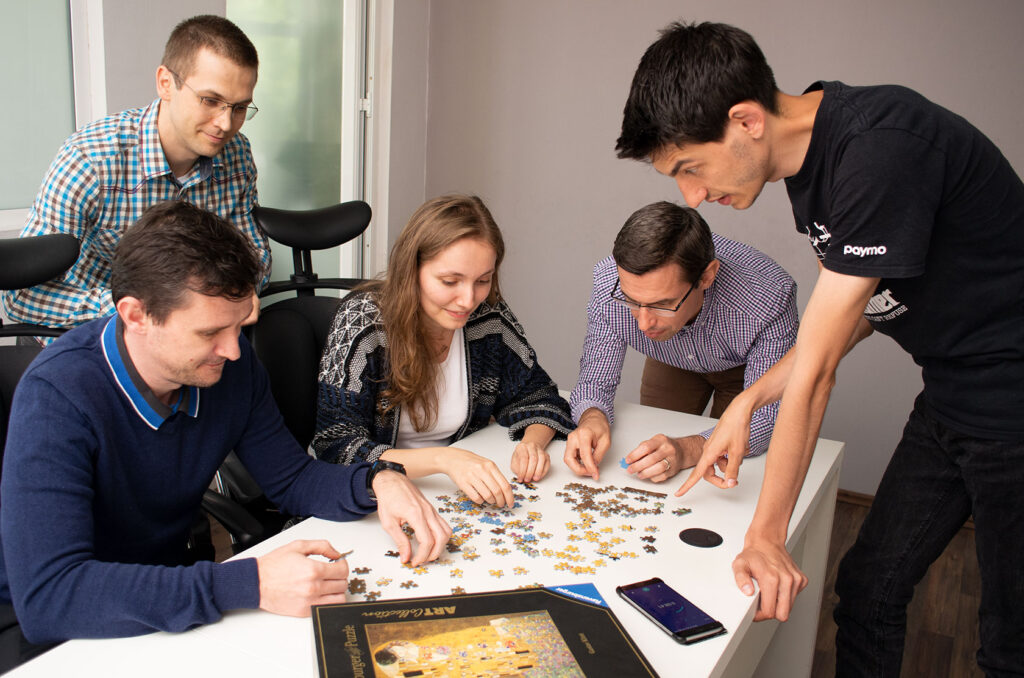
Team building puzzles are designed to foster collaboration, communication, and a sense of unity among team members. Here are some engaging puzzle ideas that can enhance team dynamics:
Escape Room Challenges: Create or participate in escape room scenarios where teams solve puzzles and riddles to “escape” from a themed room. These challenges require teamwork, effective communication, and creative problem-solving. They can be physical or virtual, offering flexibility based on your team’s preferences.
Collaborative Problem-Solving Tasks: Set up puzzles that require input and solutions from all team members. Examples include large-scale jigsaw puzzles where everyone contributes to the assembly or complex logic puzzles that need a collective effort to solve. These tasks encourage collaboration and harness the diverse skills of team members.
Mystery Solving Games: Organize a mystery-solving event where teams work together to uncover clues and solve a fictional mystery. This type of puzzle encourages strategic thinking, teamwork, and attention to detail as teams piece together information to reach the solution.
Puzzle Competitions: Host friendly competitions where teams tackle the same puzzle or a series of puzzles. This can include timed challenges or creative contests. Competitions can build camaraderie and add a fun, competitive element to team-building activities.
Interactive Puzzle Workshops: Conduct workshops that focus on solving various types of puzzles together. This can include word games, brain teasers, or strategic challenges. Workshops provide a structured environment for learning and bonding through shared experiences.
These puzzle ideas not only make the workday more enjoyable but also strengthen team relationships and enhance overall workplace morale.
Case Studies
This section will provide real-world examples of how different companies have successfully incorporated puzzles into their work environments. By showcasing these case studies, readers can see the tangible benefits and practical applications of office puzzles in various settings.
Success Stories
- Company A: Highlight how this tech startup introduced weekly puzzle challenges to foster team collaboration. Discuss improvements in communication and morale, and include specific metrics or feedback from employees about how these activities impacted their work experience.
- Company B: Describe a corporate finance firm that used logic puzzles as part of their onboarding process. Explain how these puzzles helped new hires adapt quickly to the company culture and build strong relationships with their colleagues.
Improvements in Engagement and Productivity
- Employee Surveys: Share data from surveys or interviews with employees about how puzzles affected their engagement levels and job satisfaction. Provide insights into how these activities helped reduce stress and increase productivity.
- Performance Metrics: Include examples of how companies measured changes in productivity or team performance following the introduction of office puzzles. This could involve comparing key performance indicators before and after implementing these activities.
Feedback and Testimonials
- Employee Testimonials: Feature quotes or stories from employees who have experienced the benefits of office puzzles firsthand. Highlight personal anecdotes about how puzzles made their workday more enjoyable and fostered a sense of camaraderie.
- Management Insights: Include perspectives from managers or team leaders on how puzzles have impacted team dynamics, problem-solving abilities, and overall workplace atmosphere.
This section aims to provide practical, evidence-based examples that demonstrate the value of integrating puzzles into the workday, offering readers inspiration and concrete ideas for their own teams.
Conclusion
Incorporating puzzles into your workday can transform your office environment, boosting collaboration, creativity, and productivity. These engaging activities provide mental refreshment while promoting teamwork and reducing stress. By introducing word games, logic challenges, or team-building puzzles, you’ll create a dynamic workspace where employees feel energized and motivated. Start small with daily or weekly puzzle breaks and watch as your team’s engagement and performance improve organically.
FAQ’s
1.What types of office puzzles can we use?
You can use word puzzles, logic puzzles, jigsaw puzzles, and team-building activities to engage your team.
2.How do puzzles improve productivity at work?
Puzzles help by reducing stress, encouraging creative thinking, and promoting collaboration among team members.
3.Are puzzles suitable for every type of team?
Yes, puzzles can be adapted to fit various team dynamics and skill levels, making them suitable for all kinds of teams.
4.How often should we introduce puzzles during the workday?
You can introduce puzzles during daily breaks or as part of weekly team-building exercises.
5.Can puzzles help with team building?
Yes, puzzles promote teamwork, problem-solving, and communication, making them excellent for team building.
6.What are the benefits of using word puzzles in the office?
Word puzzles improve vocabulary, enhance cognitive function, and provide a fun mental break.
7.How do logic puzzles impact decision-making?
Logic puzzles sharpen critical thinking, helping employees make better decisions by enhancing their analytical skills.
8.Are digital puzzles as effective as physical ones?
Yes, digital puzzles can be just as engaging and beneficial, offering a more accessible option for remote or hybrid teams.
9.How do puzzles reduce workplace stress?
Puzzles offer a mental break, allowing employees to reset and return to tasks with renewed focus.
10.Can puzzles help with creative problem-solving?
Yes, puzzles encourage out-of-the-box thinking, which is essential for creative problem-solving in the workplace.
11.What are good puzzle ideas for large teams?
Large teams can engage in group puzzles like escape rooms, collaborative jigsaw puzzles, or team-wide riddle challenges.
12.How can we measure the effectiveness of puzzles?
You can track employee engagement, satisfaction, and performance metrics before and after implementing puzzle activities.
13.What is the ideal duration for puzzle breaks?
Puzzle breaks can last anywhere from 10 to 30 minutes, depending on your team’s schedule and preferences.
14.Do puzzles work for remote teams?
Yes, there are plenty of digital puzzle options that remote teams can use to stay connected and engaged.
15.How do puzzles contribute to a positive work culture?
Puzzles create an atmosphere of fun and collaboration, helping build stronger relationships and a more engaged team.
16.Can puzzles help improve communication within teams?
Yes, many puzzles require teamwork and communication, helping teams improve their collaboration skills.
17.Are puzzle competitions a good idea for the workplace?
Yes, friendly competitions can motivate teams, create excitement, and enhance engagement among employees.
18.How can we integrate puzzles into our daily routine?
You can schedule puzzle breaks or start meetings with quick puzzle activities to get everyone focused and energized.
19.What tools can we use for office puzzles?
You can use apps, websites, and printable puzzle resources to make implementation easy.
20.Can puzzles accommodate different learning styles?
Yes, puzzles come in various formats—visual, verbal, and logical—catering to diverse learning preferences in your team.
